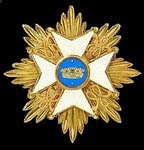First raised 1674. 2 battalions strong. Ranked 59th in the SYW.
Flags carried 1695-1791.
Text from Susane Vol.7.
In April 1756 Royal Comtois embarked at Toulon for the expedition to Minorca. In the assault on Port Mahon on the 27th June, it was part of the left attack on the redoubts of Strugen, Argyle and De La Reine, and showed great courage. Captain de Sartre and sub-lieutenant of grenadiers Dufard were killed; Captain Beaumesnil and a lieutenant were wounded.
Returning to France after the conquest of the island, the regiment was sent in 1757 to join the army of Hanover and pursued the enemy to Klosterseven. At the beginning of 1758 it retreated to the Rhine and assisted at the battle of Crefeld, after which it returned to France. It spent the last campaigns of the Seven Years War on the coast of Flanders.
A detachment of volunteers [from the regiment], commanded by Captain the Count of Muret, continued to serve with the army of Germany. On the 19th December 1759 this detachment, only 160 men strong, was cantoned at Winter-Witten with 60 hussars and a cannon. There it was attacked by Baron Würmser, who had 500 cavalry, 400 infantry and 2 guns. On the appearance of the enemy the hussars, troops recruited exclusively from Germany, fled. The Count of Muret, attacked in flank and rear, fought strenuously for an hour and a half, and did not surrender until a third of his men had fallen.
By an ordonnance of 10th December 1762 Royal Comtois passed to the service of ports and colonies.
And this is the uniform in 1756:
























